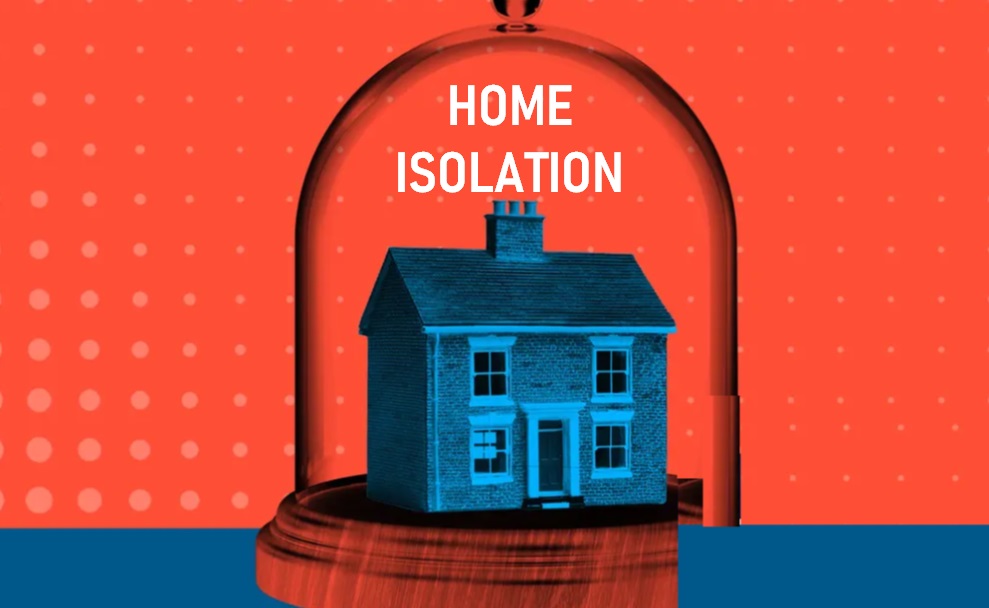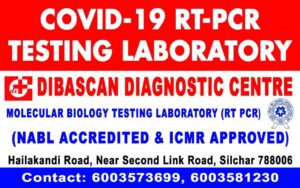India & World UpdatesHappeningsBreaking News
Health Ministry issues revised guidelines for home isolation of mild, asymptomatic COVID cases

Jan. 5: The Ministry of Health & Family Welfare has issued updated guidelines for home isolation. The present guidelines are applicable to COVID-19 patients who have been clinically assessed and assigned as mild / asymptomatic cases of COVID-19.

The new guidelines specified that patient under home isolation will stand discharged and end isolation after at least 7 days have passed from testing positive and no fever for 3 successive days and they shall continue wearing masks. There is no need for re-testing after the home isolation period is over. Asymptomatic contacts of infected individuals need not undergo Covid test & monitor health in home quarantine.
 Patients eligible for home isolation:
Patients eligible for home isolation:
i. The patient should be clinically assigned as mild/ asymptomatic case by the treating Medical Officer. Further a designated control room contact number at the district /sub district level shall be provided to the family to get suitable guidance for undertaking testing, clinical management related guidance, assignment of a hospital bed, if warranted.
ii. Such cases should have the requisite facility at their residence for self-isolation and for quarantining the family contacts.
iii. A caregiver (ideally someone who has completed his COVID-19 vaccination schedule) should be available to provide care on 24 x7 basis. A communication link between the ‘caregiver and a Medical Officer is a prerequisite for the entire duration of home Isolation.
iv. Elderly patients aged more than 60 years and those with co-morbid conditions such as Hypertension, Diabetes, Heart disease, Chronic lung/liver/ kidney disease, Cerebrovascular disease etc shall only be allowed home isolation after proper evaluation by the treating medical officer.
v. Patients suffering from immune-compromised status (HIV, Transplant recipients, Cancer therapy etc.) are not recommended for home isolation and shall only be allowed home isolation after proper evaluation by the treating Medical Officer.
 Treatment for patients with mild /asymptomatic disease in home isolation:
Treatment for patients with mild /asymptomatic disease in home isolation:
- Patients must be in communication with a treating Medical Officer and promptly report in case of any deterioration.
- The patient must continue the medications for other co-morbidities/ illness after consulting the treating Medical Officer.
- Patient may utilize the teleconsultation platform made available by the district/state administration including the e-Sanjeevani tele-consultation platform.
- Patients to follow symptomatic management for fever, running nose and cough, as warranted
- Patients may perform warm water gargles or take steam inhalation thrice a day.
- If fever is not controlled with a maximum dose of Tab. Paracetamol 650 mg four times a day, consult the treating doctor.
- Information floating through social media mentioning non-authentic and non-evidence-based treatment protocols can harm patients. Misinformation leading to creation of panic and in-turn undertaking tests and treatment which are not required has to be avoided.
- Do not rush for self-medication, blood investigation or radiological imaging Ike chest X-ray or chest CT scan without consultation of your treating Medical Officer.
- Steroids are not indicated in mild disease and shall not be self-administered. Overuse & Inappropriate use of steroids may lead to additional complications. Treatment for every patient needs to be monitored individually as per the specific condition oft he patient concerned and hence generic sharing of prescriptions shall be avoided.
- In case of falling oxygen saturation or shortness of breath, the person may require hospital admission and shall seek immediate consultation of their treating Medical Officer/survellance team /Control room.
 When to seek medical attention:
When to seek medical attention:
Patient / Caregiver will keep monitoring their health. Immediate medical attention must be sought if serious signs or symptoms develop. These could include:
- Unresolved High-grade fever (more than 100° F for more than 3 days)
- Difficulty in breathing
- Dip in oxygen saturation (Sp02 < 93% on room air at least 3 readings within 1 hour) or respiratory rate >24/ min
- Persistent pain/pressure in the chest, ‘Mental confusion or inability to arouse,
- Severe fatigue and myalgia





